I often get horticulture questions from county extension agents, Green Industry professional, gardeners and my next door neighbors. One of the most common questions I get is why their plant did not flower that year. There are many reasons why a plant, either woody or herbaceous perennial, will not flower and both new and established plants can be affected. Some of the below reasons are obvious, some not so obvious.
There may be several reasons why a landscape plant does not flower (more to come next week):
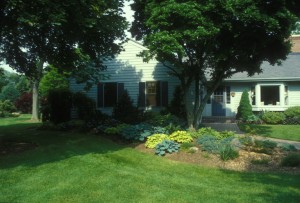
1) Plants requiring full sun are not receiving enough sunlight.
- Sun loving plants require at least six hours of direct sunlight per day to produce flower buds
- Flowering is significantly reduced in areas with too much shade
- Foliar diseases may be increased, such as powdery mildew, as foliage stays wet longer after rain
- Growth is tall and “leggy” with most of the foliage and flowers occurring at the top of the plant
2) Transplant shock may result in little to no flowering 2-3 years after planting.
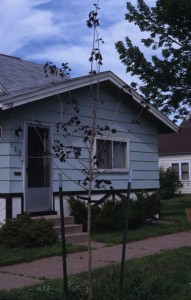
- After planting, woody plants are using energy to establish a root system to support future leaves and flowers
- Make sure plants are receiving enough water to encourage root growth and plant establishment
- For trees, it may take longer than 3 years to produce new flowers
3) A plant may not flower because it is not cold hardy to your area.


- If you live in U.S.D.A. Cold Hardiness Zone 4 and plant is rated to only zone 5, buds may be killed over winter
- For some plants, like forsythia, vegetative (leaf) buds can be a half to one zone more cold hardy than the flowering buds
- Make sure to select a plant and cultivar rated to your cold hardiness zone
4) In warmer cold hardiness zones a plant may not receive enough chilling hours in winter to break dormancy.

- Chilling hours are the total amount of time during winter below a certain temperature, called vernalization
- Required temperature are either below freezing, 0° C (32°F) or below 7°C (45°F) for temperate species
- Plants suited for colder climates, like common lilac (Syringa vulgaris), require at least 3 months of cold temperatures in order to break dormancy and bloom in spring
- In areas with mild winters, these plants may not flower or set fruit
- Low chilling hour requiring plants are available for warmer areas
- There is no definitive data on number of chilling hours required for all species
5) Severe late spring frosts can kill flower buds coming out of dormancy or emerging buds.
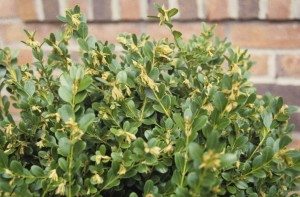
- Developing spring buds are in advanced stages of development with minimal cold hardiness
- Flowers can be killed or severely deformed
- Especially damaging if the hard frost occurs after weeks of warm temperatures resulting in budbreak
- Little to no fruit is produced that year; a serious problem for fruit growers
6) Pruning trees and shrubs at the wrong time of year will remove flower buds.
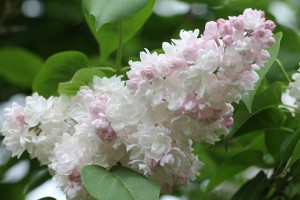
- Flower buds are produced during the preceding summer for spring flowering plants
- Prune within two weeks after flowering in spring
- Avoid pruning in mid to late summer as next year’s flower buds are developing for next year’s bloom
- Can prune large, suckering shrubs in dormant season, but realize flowering will be reduced that year
- For summer flowering shrubs, late winter to early spring before growth begins is a great time to prune as flower buds have not developed yet for that summer
7) Flowering can decrease significantly on older, overgrown shrubs like lilacs, forsythias, chokeberries, and spirea.
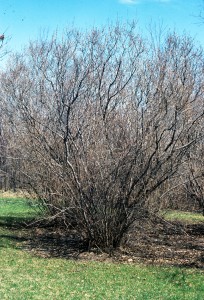

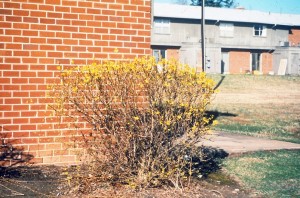
- Larger diameter branches have reduced flowering as the stems age, especially for lilacs
- Flowers may only be at the very top of the plant out of sight and smell
- Large, suckering shrubs need renewal pruning, also called thinning
- Depending on the species, every 1-3 years, remove about a third of the largest diameter branches (greater than 1.5” in diameter) back to the base of the plant to allow light penetration
- Regeneration of new suckering branches will occur at the base of the plant that produce new flower buds the second or third year and fill in the plant
- Thinning (renewal pruning) also preserves the overall plant shape
- Never shear flowering shrubs as you will be removing flower buds and ruin the plant form
- Renewal pruning should only be done for shrubs that sucker
- Do not attempt this type of pruning on evergreens or slow growing plants
8) A tree or shrub may be alternate bearing with heavy blooming one year and sparse flowering the next year.

- Common with some trees, such as Japanese and Peking tree lilacs (Syringa reticulata and S. pekinensis), and flowering crabapples (Malus spp.)
- There is little a gardener can do to avoid this from occurring
- If the fruit is not ornamental, removal of old flowers before fruit set may redirect a plant’s energy into flower bud production for next year’s bloom instead of fruit production this year
- Select plants that reliably flower each year if you do not want to miss the show
Stay tuned for part 2 of this article next week!
Laura Jull, Ph.D. aka The Lorax